Introduction
Scallion Oil Dried Shrimp Clear Noodle Soup, a dish that marries simplicity with profound flavor, is a testament to the beauty of minimalist cooking. Rooted in Chinese culinary traditions, this soup celebrates the harmony of umami-rich dried shrimp, aromatic scallion-infused oil, and delicate noodles suspended in a clear, comforting broth. Unlike hearty stews or creamy soups, this recipe prioritizes clarity and balance, allowing each ingredient to shine without overwhelming the palate. Whether you’re a seasoned home cook or a novice in the kitchen, this guide will walk you through the nuances of crafting this timeless dish, from sourcing the finest ingredients to mastering the techniques that elevate it from ordinary to extraordinary.
The Philosophy Behind the Dish
At its core, this soup embodies the principle of less is more. Chinese cuisine often emphasizes the interplay between textures, temperatures, and subtle flavors, and this dish is no exception. The broth, though clear, is deeply savory thanks to the dried shrimp, which impart a briny, oceanic sweetness. The scallion oil, a fragrant emulsion of slow-cooked green onions and neutral oil, adds a layer of grassy richness that lingers on the tongue. Paired with tender noodles and a garnish of crisp scallions, the result is a bowl of soup that feels both grounding and refreshing—perfect for any season.
Ingredients: Understanding Each Component
To achieve authenticity, it’s crucial to select ingredients that align with the dish’s intended flavor profile. Below is a breakdown of each element, along with substitutions and tips for sourcing.
-
Dried Shrimp (海米)
- Role: The backbone of the broth’s umami depth. These tiny crustaceans, sun-dried and often lightly salted, contribute a concentrated seafood essence.
- Selection: Opt for medium-sized shrimp with a vibrant orange hue. Avoid overly large or brittle varieties, as they may be over-dried and lack flavor.
- Substitutions: In a pinch, use anchovy fillets (rinsed to reduce saltiness) or bonito flakes, though these will alter the dish’s character.
-
Scallions (葱)
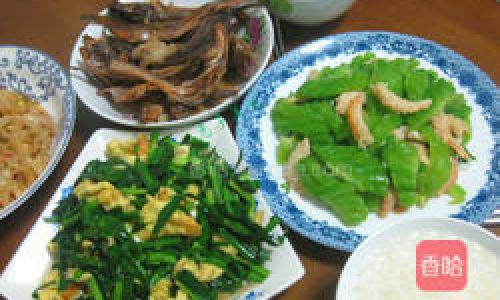
- Role: Split into two preparations—the green parts are used for infusing oil, while the white bulbs add crunch as a garnish.
- Selection: Look for firm, bright green scallions with unblemished white bases. Avoid wilted or yellowing specimens.
- Storage: Wrap in a damp paper towel and refrigerate to maintain freshness.
-
Neutral Oil
- Role: Acts as a carrier for the scallion’s aroma without competing for flavor. Canola, grapeseed, or peanut oil work best.
- Avoid: Olive oil or sesame oil, as their strong flavors will overshadow the delicate broth.
-
Noodles
- Role: The soup’s textural anchor. Fresh wheat noodles, sometimes labeled as “Hong Kong-style” or “thin egg noodles,” are ideal.
- Substitutions: Dried wheat noodles or rice noodles can be used, though adjust cooking times accordingly.
-
Broth Base
- Role: A simple mixture of water and dried shrimp, simmered to extract maximum flavor.
- Enhancements: For added complexity, a single chicken or pork bone can be added during simmering (remove before serving).
-
Seasonings
- Salt: Use sparingly, as dried shrimp are naturally salty.
- White Pepper: A pinch adds warmth without bitterness.
- Sesame Oil (optional): A drizzle at the end enhances aroma but is traditional.
Step-by-Step Preparation
Preparing the Scallion Oil
The foundation of this dish lies in the scallion oil, a fragrant infusion that requires patience and attention to detail.
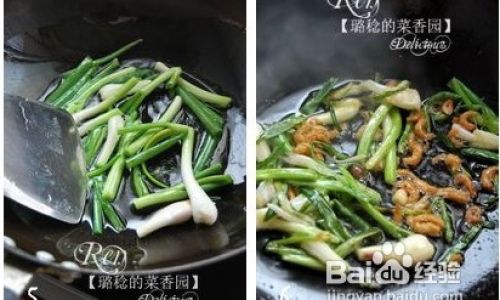
- Chop the Scallions: Separate the green and white parts. Finely slice the green portions into 2-inch segments. Reserve the white bulbs for garnish.
- Heat the Oil: In a small saucepan, warm ½ cup of neutral oil over low heat. Add the green scallion segments.
- Infuse Gently: Cook the scallions for 15–20 minutes, stirring occasionally. The oil should bubble lightly but never sputter. The goal is to coax out the scallions’ sweetness without browning them, which would introduce bitterness.
- Strain and Store: Once the scallions turn emerald green and the oil is fragrant, remove from heat. Strain the oil through a fine-mesh sieve, discarding the solids. Let cool completely before using.
Simmering the Dried Shrimp Broth
The broth’s success hinges on extracting flavor without cloudiness.
- Rinse the Shrimp: Place ½ cup of dried shrimp in a bowl and cover with cold water. Agitate gently, then drain. This removes excess salt and debris.
- Simmer Gently: In a medium pot, combine 6 cups of water, the rinsed shrimp, and a 1-inch piece of ginger (smashed). Bring to a bare simmer over medium-low heat.
- Skim Impurities: As the broth heats, a frothy scum may rise. Skim this off with a spoon to ensure clarity.
- Time It Right: Simmer for 20–25 minutes, then strain through a fine-mesh sieve. Discard the shrimp and ginger. The resulting broth should be amber-hued and fragrant.
Cooking the Noodles
Perfectly cooked noodles are tender yet resilient—never mushy.
- Boil Water: Fill a large pot with water and bring to a rolling boil. Add a pinch of salt.
- Cook Al Dente: Add 8 ounces of fresh noodles and stir gently to prevent sticking. Cook for 2–3 minutes (or follow package instructions).
- Shock and Drain: Immediately transfer the noodles to a colander and rinse under cold water to halt cooking. Drain thoroughly.
Assembling the Soup
The final assembly is where all elements converge.
- Portion the Noodles: Divide the noodles among four serving bowls.
- Ladle the Broth: Pour 1½ cups of hot broth over each bowl. The broth should just cover the noodles.
- Drizzle Scallion Oil: Add 1–2 teaspoons of the infused oil to each bowl. Adjust to taste.
- Garnish: Thinly slice the reserved scallion whites and sprinkle over each bowl. Add a pinch of white pepper and, if desired, a drizzle of sesame oil.
Expert Tips for Perfecting the Dish
- Balance the Oil: The scallion oil should enhance, not dominate. Start with a small amount and add incrementally.
- Adjust Salt Carefully: Taste the broth before seasoning. Dried shrimp vary in saltiness, so err on the side of caution.
- Customize the Heat: For a spicy kick, add a few slices of fresh chili to the scallion oil during infusion.
- Protein Additions: Elevate the dish with a soft-boiled egg, sliced pork belly, or tofu for added heartiness.
- Vegetarian Adaptation: Substitute the dried shrimp with kombu (dried kelp) and mushrooms for a plant-based broth.
Troubleshooting Common Issues
- Cloudy Broth: Overboiling or not skimming impurities can cause cloudiness. Maintain a gentle simmer.
- Bitter Scallion Oil: Burnt scallions impart bitterness. Cook over low heat and remove at the first sign of browning.
- Mushy Noodles: Overcooking is the culprit. Test noodles 1 minute before the recommended cooking time.
Serving Suggestions and Pairings
This soup shines as a standalone meal but pairs beautifully with:
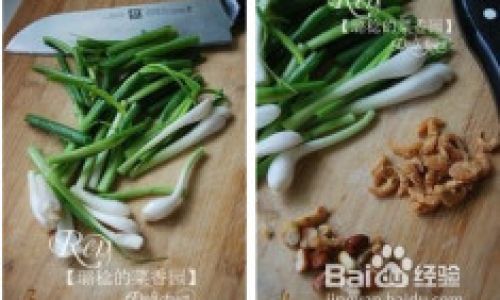
- Steamed Buns (Baozi): For a contrasting texture.
- Pickled Vegetables: A tangy side to cut through the richness.
- Green Tea: A mild brew complements the soup’s subtlety.
Cultural Context and Variations
While the recipe here is rooted in Cantonese traditions, regional adaptations abound. In Shanghai, cooks might add a splash of Shaoxing wine to the broth, while Sichuan versions could feature doubanjiang (chili bean paste) for heat. Modern interpretations sometimes incorporate ingredients like enoki mushrooms or shredded chicken, demonstrating the dish’s adaptability.
Health Benefits and Nutritional Notes
Dried shrimp are a source of protein and omega-3 fatty acids, while scallions offer vitamins A and K. The broth, being low in fat and sodium (when lightly seasoned), makes this soup a wholesome choice. However, those with shellfish allergies should avoid dried shrimp and seek alternatives.
Conclusion
Scallion Oil Dried Shrimp Clear Noodle Soup is more than a meal—it’s a meditation on balance and restraint. By honoring each ingredient’s role and mastering the techniques outlined here, you’ll create a dish that soothes the soul and delights the senses. Whether enjoyed on a chilly evening or as a midday pick-me-up, this soup invites you to slow down, savor, and appreciate the art of simplicity. So, gather your ingredients, set aside an hour, and embark on a culinary journey that transcends time and trends. Your future self—and your dinner guests—will thank you.
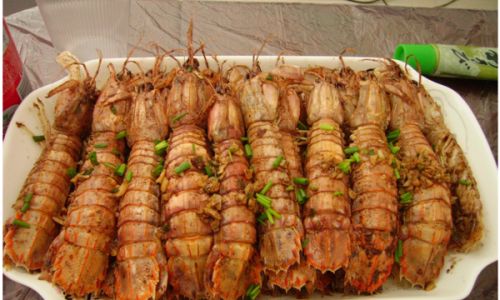
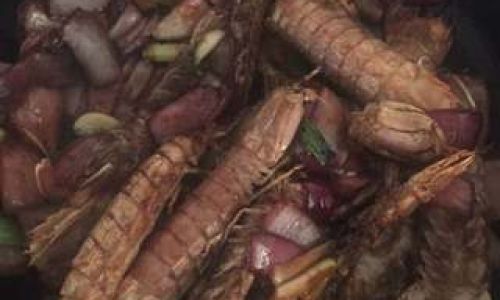

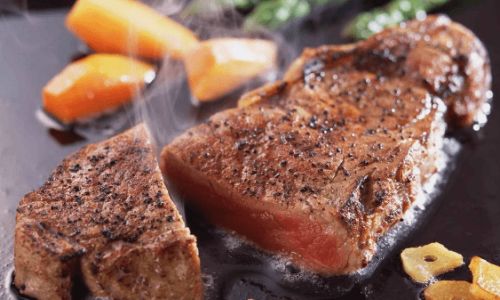

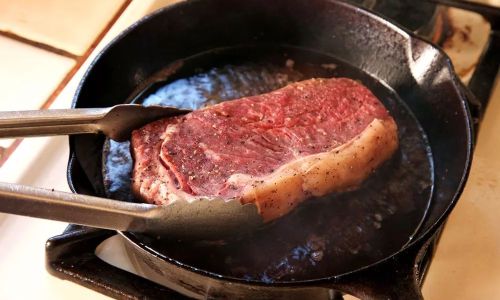
0 comments